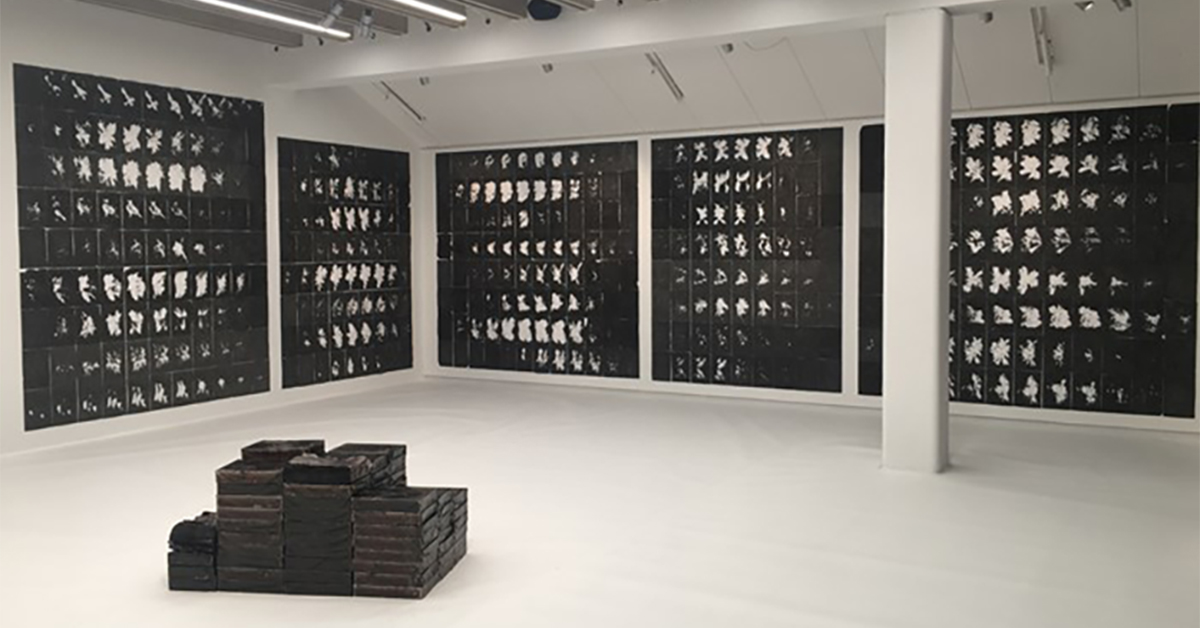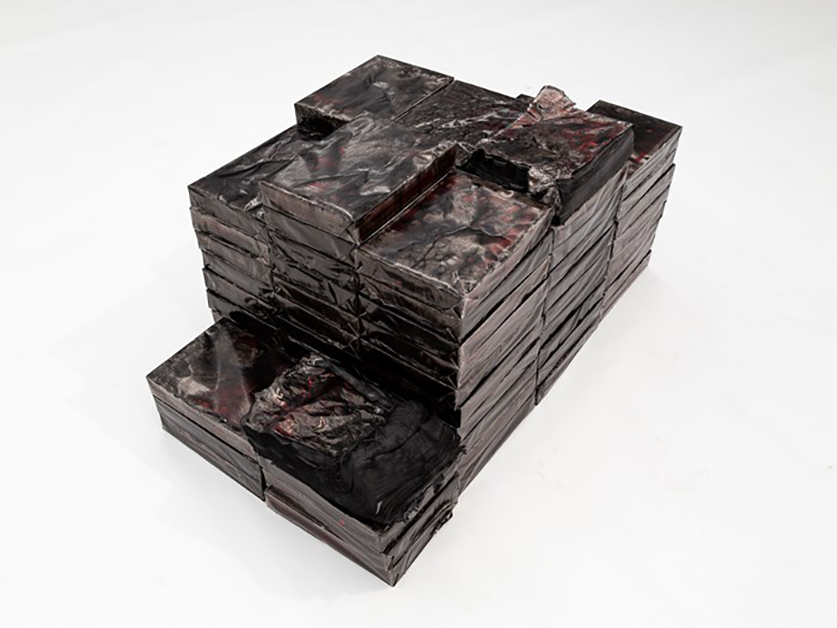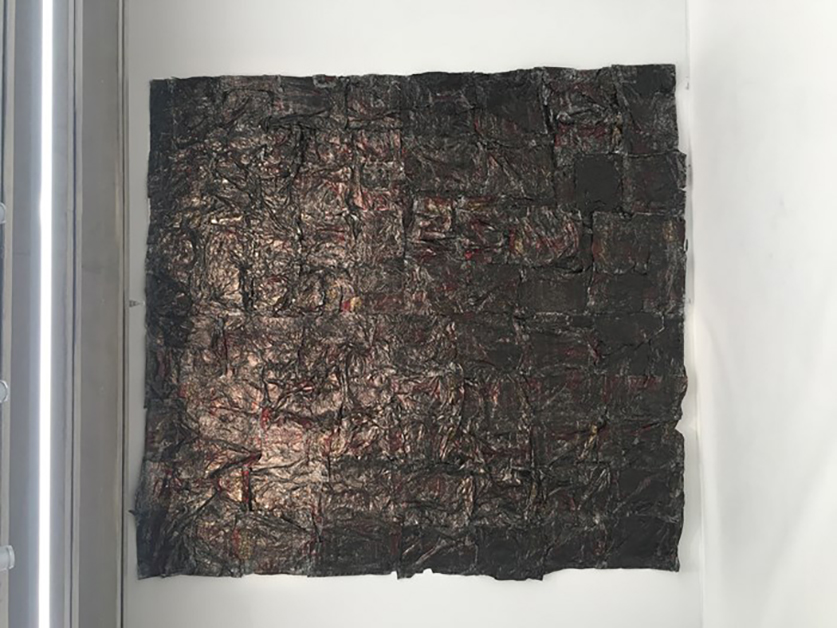
About Linear B by Anastasia Ax
Sidan uppdaterades: 8 december 2022
Based on ink and paper, Anastasia Ax’s exhibition Linear B springs from the fundamentals of drawing; with simple sheets of paper she creates a graphic installation of a performative nature, about time, metamorphosis, change, and transience.
Dates
October 11 2019 - January 12 2020
Curator Ulrika Levén on Anastasia Ax and Linear B
Signs of the Times
Based on ink and paper, Anastasia Ax’s exhibition Linear B springs from the fundamentals of drawing; with simple sheets of paper she creates a graphic installation of a performative nature, about time, metamorphosis, change, and transience. Using her body as her main tool, her works are characterised by a strong physical presence, movement and the overcoming of resistance.
Ax’s practice is like a mycelium, a finely-meshed network that links recurring themes and works. The materials she chooses are inherently cyclical: wood pulp is turned into paper, from nature to culture, ready to be filled with information. The innate disposability of the material is essential, along with its history, often in dialogue with the location. Several earlier works, for instance, were built on bales of locally sourced paper that was destined for recycling; when the bales were split open in a performance, they revealed countless stories and cultural imprints from the private and public spheres.
Ax literally started with a blank sheet of paper for this exhibition. The leitmotif is the written symbol, leaving a mark, and the material itself is the main protagonist, along with her own body movements. Physicality is exceedingly present in the artistic process, as the works reflect. As with athletes, performance is a key component in her activities, even if the actual occasion for the artist’s intervention is not always public.
The title of the exhibition, Linear B, refers to the name of the oldest known preserved form of written Greek. It was used to write Mycenaean, an archaic form of Greek (ca 1450–1100 CE). Clay tablets with these signs were found around the previous turn of the century on Crete when archaeologists were digging in Knossos, the religious and political centre of the Minoan culture, but their meaning remained unknown until 1953, when the British architect and amateur linguist Michael Ventris succeeded in deciphering them. Most of the contents turned out to be mercantile, such as lists of goods, notes on deliveries and documentation of financial transactions.
Like the administrative nature of the texts on the Mycenaean clay tablets, the perfectly ordinary A4 copy paper in this exhibition is of the kind that makes us think of contemporary activities that involve writing, either in the office or of a more creative kind. The title alludes to a previous exhibition, Linear A, which also presented signs and traces, albeit intensely and violently carved and cut into several layers of plaster covered with almost flesh-coloured newsprint from the financial pages. Linear A is the written language that preceded Linear B and is an archaic syllable script that has not yet been entirely decoded, and it is not known which language it represents.
In half of the exhibition space, the work Copyright engulfs us. Close rows of black sheets with white abstract shapes, like asymmetrical and inverted Rorschach images. The pulsating sequences seem to measure a physical, bodily condition. The graphic series convey movement and stillness. There are two kinds of copyright, one economic and one non-economic; the economic copyright can be sold, but the non-economic one cannot. In these fragile works, the title juxtaposes ownership and copyright with the inevitable transience of life and matter.
In Untitled (Office Depot), the coloured paper that was once wrapping for the white bundles of paper are steeped in ink and joined together into a massive, charred “skin”. Here and there, fragments of a company logo are discernible through the metallic black, but Ax’s action has transformed the paper from formal and communicative content into something physical and human. Her processing of the paper can be seen as an alternative kind of recycling that endows it with a new root system, a reconnection to the nature it once sprang from. The work relates to an earlier series from 2015, large wall reliefs consisting of several layers of unprinted newspaper from the financial pages of the Greek morning broadsheet Kathimerini. The petrified motion of the fragile and skin-like paper is easy to associate with the so-called wet drapery of ancient Greek sculpture, where the body forms were enhanced by the folds of the clothing. Apart from the obvious allusions to art history, there were deeper socioeconomic references; a comment on the economic and political situation in contemporary Greece, and also to her dual identity. The format related directly to her own body, and the material, like our skin, speaks of our inevitable mortality.
The presence of the body and the performative element are, as always, central to Anastasia Ax, who explores our existence and physicality, along with concepts such as time, decay and history. We see a fleeting moment. Movement and total stillness at the same time. The works are life’s changes and transience, rather than representations of life.


Sidan publicerades: 7 december 2022
